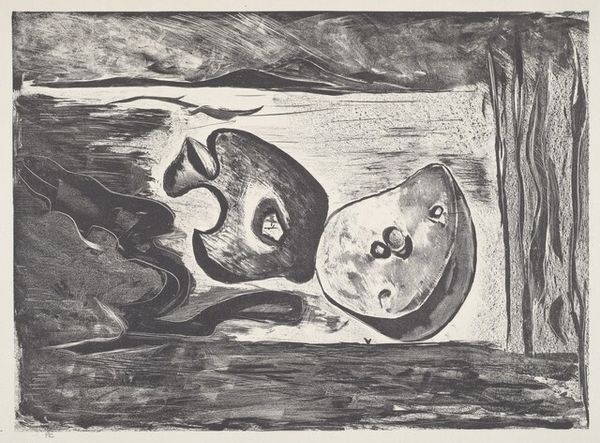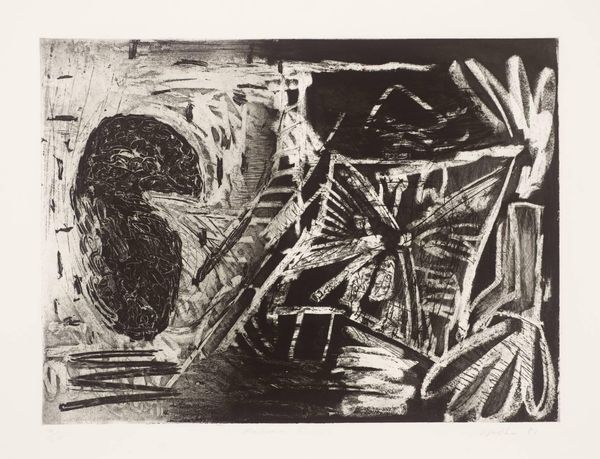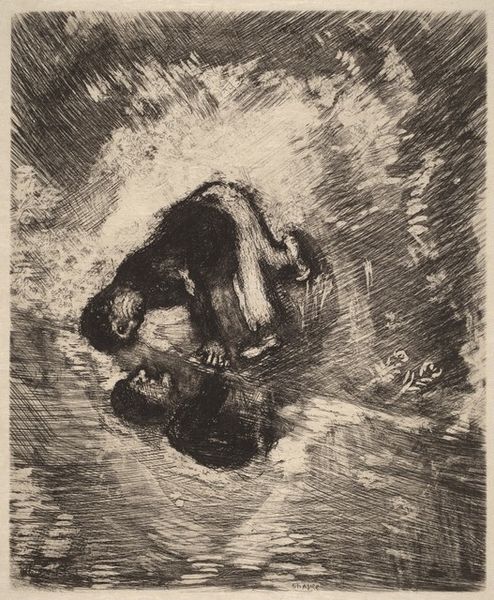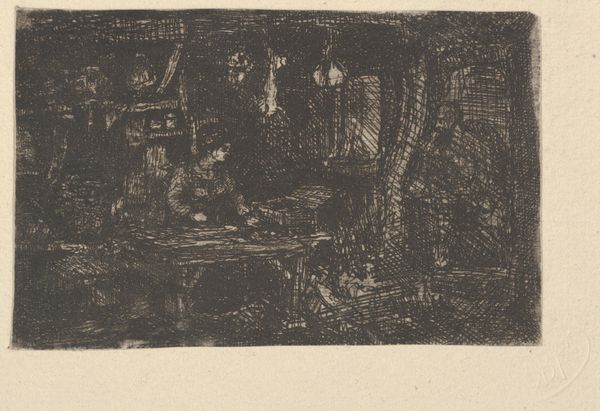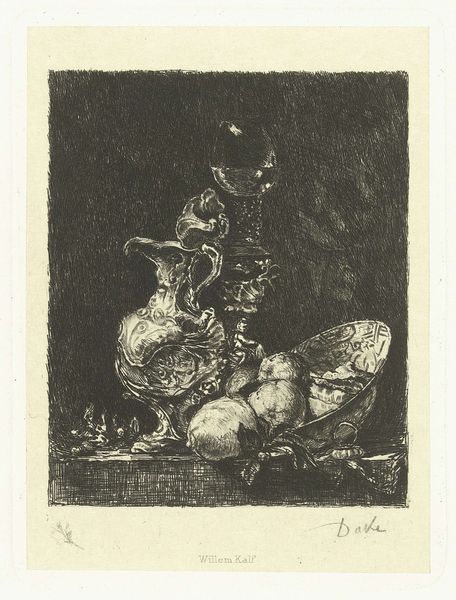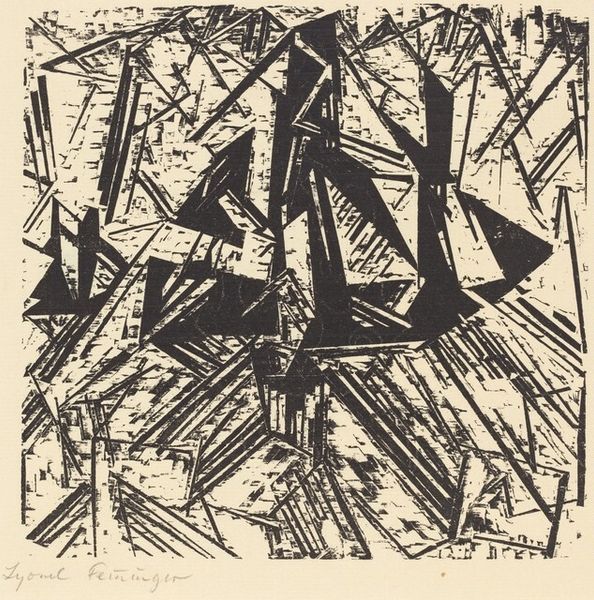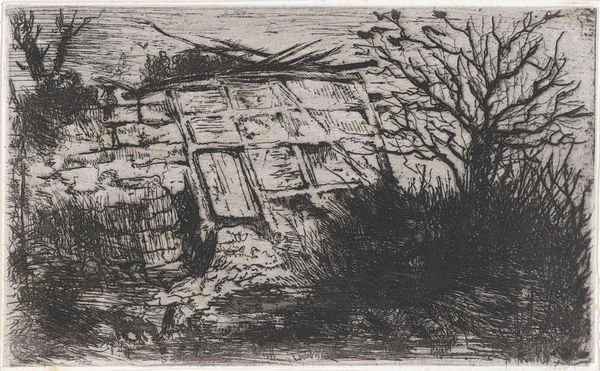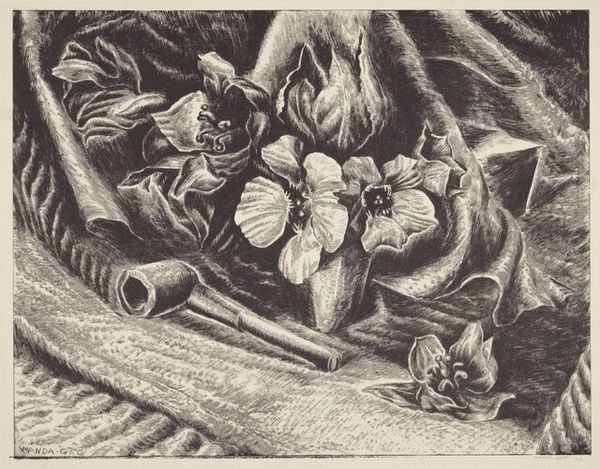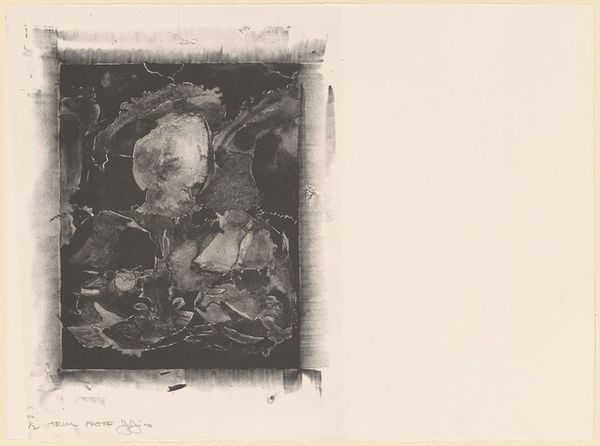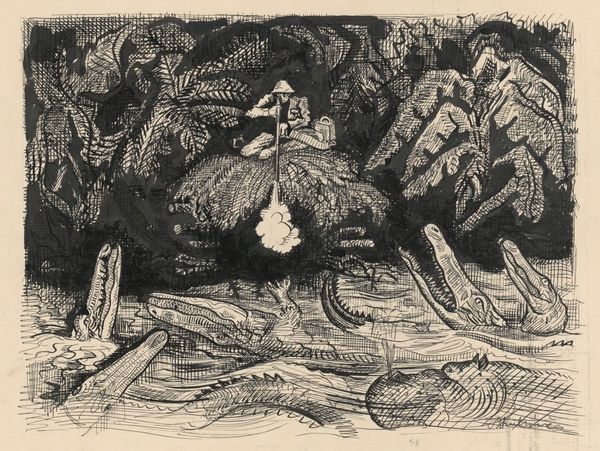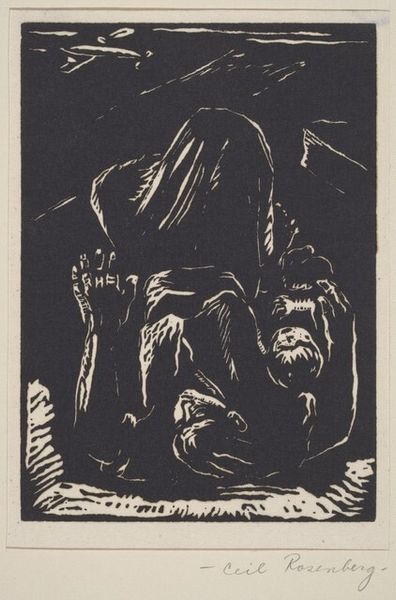
print, woodcut
# print
#
geometric
#
woodcut
Dimensions: image (irregular): 24.45 × 31.12 cm (9 5/8 × 12 1/4 in.) sheet: 34.29 × 39.37 cm (13 1/2 × 15 1/2 in.)
Copyright: National Gallery of Art: CC0 1.0
Editor: Here we have Marsden Hartley’s “Grapes,” a woodcut print from 1923. I find the starkness of the black and white so compelling. The geometric grapes contrast with the organic shapes around them. What’s your interpretation of this piece? Curator: Well, considering the period, and Hartley’s wider artistic concerns, this woodcut isn't just a simple still life. How do you think Hartley's biography and the context of the American art scene in the 1920s play into this imagery? Think about what else was going on in American art and society. Editor: I know he traveled a lot, especially in Europe. Does that have something to do with it? Maybe the European avant-garde movements? Curator: Exactly! Hartley engaged deeply with European Modernism. Looking at the composition – the stark contrast, simplified forms – this echoes the German Expressionist woodcuts. But the subject matter, grapes, it feels…intentional in an American context, doesn’t it? Consider Prohibition, and how artists were grappling with American identity. Editor: So the grapes, usually a symbol of plenty and maybe even celebration, become a charged symbol, especially in the US then? Curator: Precisely! This print isn’t simply about depicting fruit; it's engaging with the cultural and political anxieties of the era. He's taking this common subject and charging it with symbolic weight, prompting us to reflect on American identity during a period of change. Editor: Wow, I never would have seen all that just looking at some grapes. I’ll never look at a still life the same way again! Curator: That’s the point. The art object always operates within these frameworks, speaking to power, identity, and place.
Comments
No comments
Be the first to comment and join the conversation on the ultimate creative platform.

